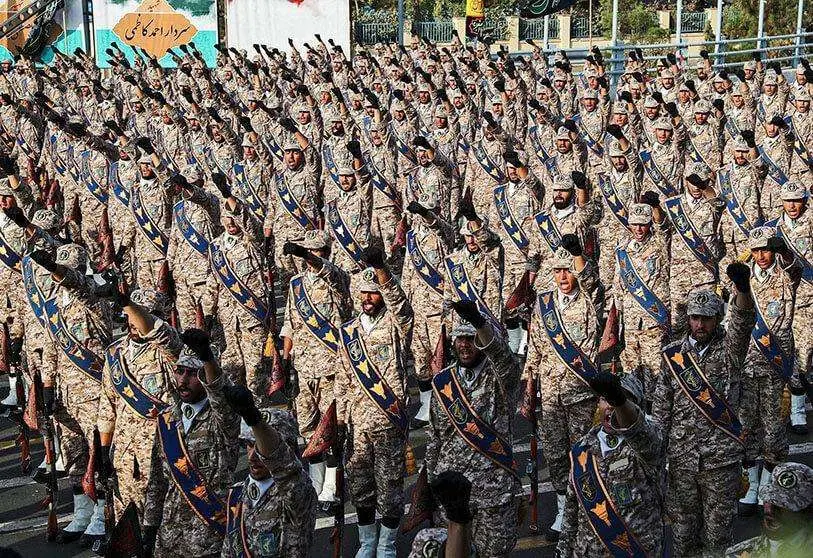Has Iran's Revolutionary Guard arrived in Ukraine?

The Iranian-made Shahed-136 drones - 'witness' in Persian, also known as 'Geran 2' - have become the new protagonists of the Russian-Ukrainian conflict in recent weeks. In addition to the controversy over the shipment of this type of Iranian weaponry to Russia, and the implications that this strengthening of Russian-Iranian ties could have for the Middle East, there is now also the possible presence of members of the Islamic Revolutionary Guard on Ukrainian territory to train Kremlin troops in the use of the Shahed-136.
This has been made public by the American newspaper The New York Times, which has warned of the dispatch of military personnel affiliated with the 'Pasdaran' to the Ukrainian peninsula of Crimea, where they were tasked with training and advising the Moscow army on the use of Iranian Shahed-136 and Mohajer-6 drones. Unmanned aerial vehicles that - according to Ukrainian reports and Western intelligence - Tehran has provided to Russian troops since President Vladimir Putin declared a "special military operation" in Ukraine in March this year.

For its part, CNN quoted a US intelligence source as claiming that the Iranian reinforcements sent to Crimea were nothing more than dozens of trainers ready to train Russian soldiers in the use of drones. This had to do with the serious problems reported by the Kremlin when, in August, Moscow's troops began deploying drones over Ukrainian territory, even though Russian troops had been trained in the use of these weapons weeks earlier in Iran.
Thus, it is not clear from either of the two versions to date how many Iranian troops may have travelled to Crimea, whether their role is to train troops or to fly the drones themselves, and whether they are still there. What they do evidence are the growing ties between Tehran and Moscow at a time when Russia's military forces appear to be flagging after almost eight months of conflict.

In this scenario, neither Russia nor Iran have commented on the presence of members of the Revolutionary Guards, but they have commented on the Persian Islamic Republic's controversial dispatch of drones to Moscow. Albeit contradictorily. "The Russians have asked for more Iranian drones and ballistic missiles with improved accuracy, particularly the Fateh and Zolfaghar family of missiles," one Iranian diplomat was quoted by Reuters news agency as saying after Khamenei's military adviser claimed that more than 20 countries are interested in buying Iranian drones. "I can't give the exact time now, but soon, very soon, two or three shipments will take place," he added.
However, the Islamic Republic's own foreign ministry spokesman, Naser Kanani, rejected these claims. "They are unfounded, [...] have no legal basis and are false," he said, denying any arms shipments and stressing Tehran's "impartiality" in the conflict. "It has always opposed the continuation of the war, and has emphasised the need to stop it and resolve differences by peaceful means."

In any case, Western interpretations of the Russian-Iranian rapprochement have led US State Department deputy spokesman Vedant Patel to call these relations a "profound threat". "The US will continue to take steps [...] to hinder these arms sales, including sanctions and export control actions," he warned.
As US sources told CNN, both the alleged dispatch of Iranian kamikaze drones and the presence of military personnel in charge of training Russian troops could be seen by France, the UK and the US - which is expected to meet behind closed doors in the framework of the UN Security Council - as a violation of Resolution 2231 (2015) on the Iranian nuclear issue adopted by the Council itself.

The document includes limitations on certain arms shipments to and from the Islamic Republic, as well as the adoption of the JCPOA (Joint Comprehensive Plan of Action) as a "fundamental change in the Iranian nuclear issue and in [...] the new relationship with the Iranian regime".
The Shahed-136 'kamikaze' drone, developed by the HESA company, has a range of about 2,500 kilometres, allowing it to carry out targeted strikes over long distances. It is a remote-controlled, unmanned vehicle that can reach 180 km/h and detonates on impact with its targets - which can range from buildings and infrastructure to radar and artillery. The explosive is carried in the nose, and weighing 200 kg, they are around 3.5 metres long.

The Mohajer-6 drone, on the other hand, is used for missile transport, but also plays an important role in surveillance.








